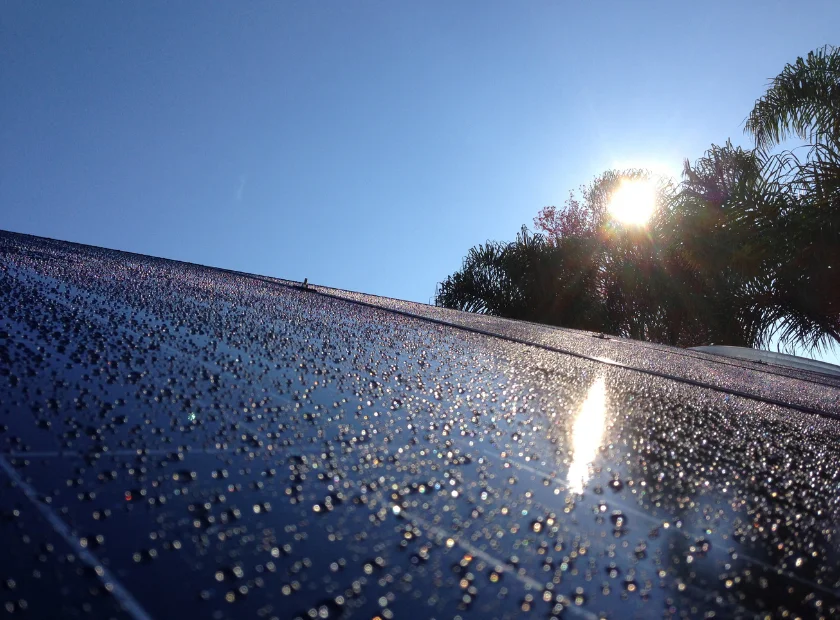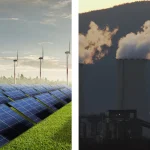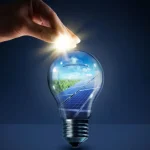Answers of the FAQ’s about Energy Storage System

With every passing day, energy storage systems are becoming a more integral part of the present energy landscape as the world works toward a more sustainable future. These systems make it possible to manage and use the unpredictable and variable renewable energy sources like solar and wind power, in an efficient manner.
By enabling the storage of excess electricity which can be later used during phases of high demand, energy storage devices enable grid stability.
Since most people are still used to the old times when they received energy from a centralized grid, and their knowledge in this field was limited to flicking switches on and off, moving towards a future with sustainable energy sources reliant on storage systems inevitably raises a lot of questions. Here are some of the most common energy storage system questions and their answers:
1. What is an Energy Storage System?
A device or collection of devices that store energy for later use is referred to as an energy storage system. Energy storage devices are a must-have in order to integrate renewable energy sources into the power grid.
Their principal function is to balance energy supply and demand by serving as a stopgap between energy production and consumption. With the help of these devices, surplus energy may be stored during times of low demand and utilized during times of high demand.
2. What is a Battery Energy Storage System?
A Battery Energy Storage System (BESS) stores and releases electrical energy using battery cells or modules. BESS system offers immediate power and backup during electricity outages and may be charged from the grid or renewable sources.
BESS are known for being scalable. However, low-energy density, high production costs and being expensive are some of the reasons they’re not in widespread use.
3. How Does a Battery Energy Storage System Work?
BESS consists of a number of batteries that store electrical energy generated by renewable energy sources like solar or wind power. The batteries release their stored energy when there is a need for it and deliver it to the grid or the load.
Although BESS systems utilize several types of batteries including Lead-acid, sodium-sulfur, and flow batteries, the lithium-ion batteries are mostly preferred due to their high energy density, quick charging speed and longer lifespans.
4. How Do Energy Storage Systems Work?
Systems for storing energy can be classified as thermal, flywheel, hybrid, or distributed. All of them function according to the similar working principal: they store energy that can be used later. However, they operate differently, for example:
- Energy is stored as heat in the thermal systems.
- Flywheel systems on the other hand make use of a rotating mass.
- Hybrid systems combine different aspects of other systems into one system.
- Distributed systems are small-scale and located near the point of use.
Utilization of a certain system depends on its specific application and requirements. Each type of energy storage system has unique advantages and disadvantages.
5. What is a Solar Energy Storage System?
Solar energy storage systems store surplus energy produced by solar panels inside batteries (like lithium-ion batteries) in order to provide a steady and dependable supply of solar electricity
There are several types of solar energy storage systems available, including:
a. On-grid Solar Energy Storage Systems
As the name suggests, these systems are connected to the grid. On-grid solar energy storage devices are manufactured with the intent of holding extra solar energy produced during times of low demand and release it during times of high demand. By storing and utilizing solar power instead of relying on the grid, these systems, can help lower electricity costs.
b. Off-Grid Solar Energy Storage Systems
In contrast, Off-grid solar energy storage systems are not connected to the grid and are made to offer a self-sufficient power supply in isolated locations or during blackouts. To offer a dependable and independent power supply, these systems often combine solar panels and batteries.
c. Hybrid Solar Energy Storage Systems
For a more adaptable and dependable power supply, hybrid solar energy storage systems combine solar electricity with other energy sources like wind or diesel generators. In addition to employing alternative energy sources to provide backup power during times when solar output is low, these systems may store excess solar energy and release it as needed.
6. What is a Thermal Energy Storage System?
Storing energy in heat form, thermal energy storage systems are most often used in large-scale energy storage applications, such as utility-scale solar power plants. When needed, these devices pull energy from storage and release it.
These systems use several types of storage medium such as molten salt, phase transition materials, or cold water, and are extensively utilized in Utility-scale energy storage, industrial energy storage, and building energy storage.
7. What is a Flywheel Energy Storage System?
Flywheels storage systems use a spinning rotor connected to an electrical generator to store rotational kinetic energy. These systems are mostly used for grid stability, backup power, and transportation, but they are also becoming more efficient, dependable, and economical because to technology improvements.
8. What is a Hybrid Energy Storage System?
Hybrid energy storage systems are meant to combine the best features of multiple storage systems, in order to provide a more effective and adaptable storage solution. Usually, it combines batteries with another kind of energy storage, such as flywheels or thermal storage.
Hybrid systems are perfect for grid stability and backup power. These systems are utilized extensively inside electric cars since they have a large energy storage capacity and high-power output.
9. Why Do We Need Energy Storage Systems?
Energy storage technologies are essential for stable and sustainable energy sources as the use of renewable energy rises. They support the management of complex problems like grid stability, peak load management, and intermittent renewable energy.
By storing excess energy during periods of low demand and releasing it during periods of high demand, energy storage systems offer a steady and stable energy supply. They help in grid balancing and prompt responses to sudden fluctuations in supply or demand, improving the grid’s overall stability. In addition to improving energy efficiency, energy storage devices can reduce reliance on fossil fuels and greenhouse gas emissions.
- Are Energy Storage Systems in Terms of AC or DC?
Energy storage systems can be either AC or DC powered depending on the use and specifications. AC energy storage technologies are compatible with the current electrical system because they store and release energy as alternating current. They are utilized in applications like inverter-based renewable energy systems that call for the conversion of AC and DC energy.
Not to be undone, DC energy storage systems also have their own particular benefits to offer. DC systems are more effective for energy that is created and stored in DC form since they store and release energy in direct current. They are utilized extensively in battery storage systems, however when integrating into the grid, they may need extra machinery for conversion to AC power.
- Are Energy Storage Systems Still Connected to the Grid?
Energy storage systems can be either grid-connected or off-grid depending on the particular needs on consumers:
By storing excess energy during periods of low demand and releasing it during periods of high demand, grid-connected technologies preserve grid stability.
Off-grid systems provide dependable power to isolated and remote locations and are autonomous, powered by renewable energy.
The advantages and disadvantages of each system should be considered while deciding on the ideal one.
- Can a Flywheel Energy Storage System Power a Home?
Powering an entire household requires a lot of power. Although flywheel energy storage devices have the potential to produce high power output ideal for quick power delivery, their usage as a major energy source may be constrained by being unable to deliver sustained power over extended periods of time, and also because they are still very expensive in comparison to other technologies.
However, they are an appealing alternative for lowering energy expenditures because they are extremely efficient with little energy loss, have a long lifespan, and need little maintenance. Future technological advancements and cost reductions could boost their feasibility for household energy storage.
Everything ultimately boils down to affordability. Flywheel energy storage devices will pay off over longer periods of time for those who can afford a higher initial investment. On the other hand, those who are on a tight budget should hunt for an affordable substitute.
- Can a System Have Two Forms of Energy Storage?
Yes.
Hybrid energy storage systems consist of multiple types of storage technologies to create a more adaptable and effective energy solution. These systems are a best-of-all-worlds kind of solution to storage problems, and provide benefits including high power output, large energy storage capacity, and high efficiency.
However, due to a complicated infrastructure and equipment, these systems inevitable lead to higher costs. To select the best option, it is crucial to assess the benefits and restrictions of integrating energy storage technologies.
- Can a System Have Unsteady and Steady Energy Storage?
An energy storage system may have unstable or steady energy storage depending on its use.
- Steady storage (like thermal or battery storage) provides steady and long-term energy.
- Unsteady storage (such as flywheel or capacitor) gives high power for brief durations.
- Multiple technologies are used in hybrid energy storage systems to create a more adaptable and effective storage solution. In controlling supply and demand, they offer increased efficiency, dependability, and flexibility. However, integrating several systems can raise complexity and expense, necessitating more infrastructure and equipment.
For a specific application, it is pertinent to weigh the benefits and drawbacks of each system before adoption.
- Do Solar Energy Systems Require Storage?
No.
At least from an operational standpoint, solar energy systems do not strictly need energy storage to function. However, there are huge benefits for hooking energy storage to a solar grid, as it can help you store surplus energy produced, which can later be used during periods of high electricity demand.
- Does Thermal Energy Storage System Reduce kWh Usage?
Yes.
Thermal energy storage systems store extra thermal energy during times of high demand, thereby reducing overall kWh consumption.
Sensible heat, latent heat, and thermochemical storage are a few types that are applied in commercial and industrial settings to cut down on energy use.
- How to Size Up Energy Storage System?
Sizing up energy storage system requires taking into account factors like power and energy needs, discharge duration, temperature range, and system lifetime.
System capacity and performance can be checked using techniques like load analysis and computer modeling. Other important factors to consider include choosing the right energy storage technology, the installation and maintenance needs, and compatibility with existing infrastructure.
- How to Test a Lithium-Ion Energy Storage System?
Testing is essential to guarantee performance and safety for lithium-ion batteries. Tests are required to evaluate electrical and thermal characteristics such as capacity, voltage, current, temperature, resistance, and impedance. Some common testing methods include:
- Capacity testing: measures the amount of charge that a battery can store and deliver over time.
- Voltage testing: measures the voltage of a battery to determine its state of charge and health.
- Current testing: measures the current flowing into or out of a battery to determine its power output or input.
- Temperature testing: measures the temperature of a battery to ensure it stays within a safe operating range and to prevent thermal runaway.
- Resistance testing: measures the internal resistance of a battery to determine its energy efficiency and health.
- Impedance testing: measures the frequency response of a battery to determine its electrochemical behavior and aging.
- What is Advanced Energy Storage Systems?
Advanced energy storage systems are the most recent energy storage technologies and solutions that provide advanced benefits such as higher efficiency and sustainability.
Here are some of the energy storage systems:
- Solid-state batteries: These solid state batteries utilize electrolyte to offer better longevity, safety, and energy density than liquid or gel batteries.
- Flow batteries: batteries that use liquid electrolytes that flow through separate tanks to store and release energy, enabling scalable, long-duration energy storage.
- Supercapacitors: devices that store energy electrostatically instead of electrochemically, providing high power density and fast charging and discharging.
- Thermal energy storage: Systems that use temperature differences to store and release energy, such phase-change materials, molten salts, or thermal reservoirs, allow for effective and dispensable heating and cooling.
- Compressed air energy storage: devices that provide extensive and grid-interactive energy storage by compressing air in below- or above-ground chambers and releasing it through turbines to produce power.
- What is an Aquifer Thermal Energy Storage System?
Aquifer Thermal Energy Storage (ATES) systems are those which store and release thermal energy present in aquifers (rocks with water deposits found deep under Earth’s surface) for cooling and heating buildings. A heat exchanger, an injection well, and a well field are typical components of an ATES system.
ATES offer several benefits such as high energy efficiency, lower greenhouse gas emissions, minimal maintenance costs, and enhanced dependability.
- What is Distributed Energy Storage System?
Distributed Energy Storage System (DESS) are those which are situated close to or inside the load they support rather than at a central location. These systems make Localized energy management possible, which also increase grid efficiency, flexibility, and dependability.
DESS systems can be linked to the grid or run independently and come in a variety of configurations, including battery storage, flywheels, pumped hydro, compressed air, or thermal storage. For more dependable and dispatchable electricity, DESS systems can also be coupled with renewable energy sources like solar or wind.
- What is Zero Energy Cold Storage System?
Zero-energy cold storage systems make use of thermal energy storage, renewable energy sources, and energy-efficient architecture in order to cut down on grid-based energy and by extension, the harmful greenhouse gas emissions.
In comparison to traditional cold storage, these systems provide benefits including reduced operating costs, dependability, and carbon footprint.
Conclusion
The shift to a future where energy is more sustainable, dependable, and resilient is made possible in large part by energy storage technologies. They can aid in the integration of renewable energy sources, the reduction of greenhouse gas emissions, the enhancement of grid flexibility and stability, and the improvement of energy access.
In order to fulfill the rising demand for clean, reasonably priced, and dependable energy, the development and implementation of energy storage systems should be sped up. These systems are essential for creating a more robust and sustainable energy system. We can realize the full potential of renewable energy and create a better future for everyone by adopting the most recent technologies, designs, and energy storage procedures.


Thumbs up!